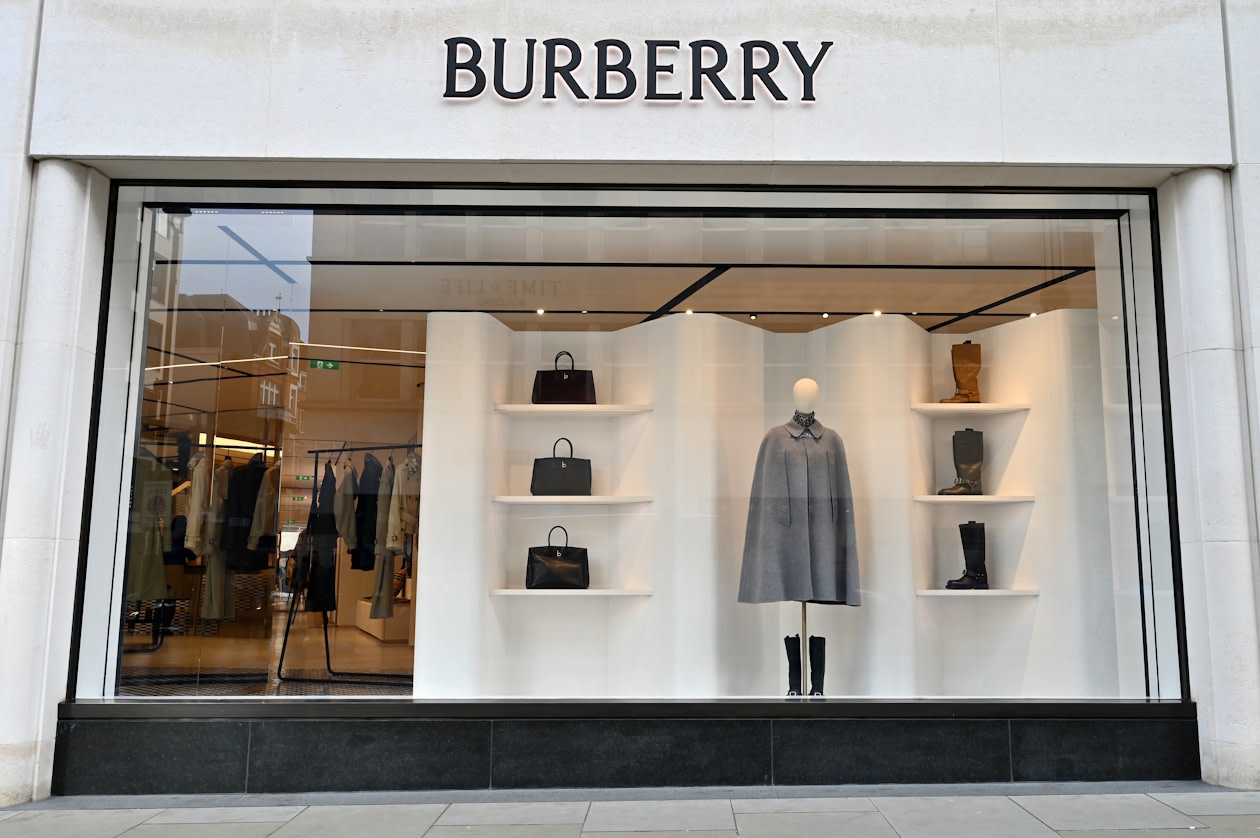Burberry’s full-year revenue fell 15% to £2.5bn, ignoring exchange rate impacts, driven by declines across all regions. Full-year comparable store sales were down 12%, with a slower rate of decline of 6% (consensus: -8%) in the fourth quarter.
Underlying operating profits fell 88% to £26mn (16mn expected), excluding the impact of £29mn worth of restructuring costs.
Free cash flow rose by £2mn to £65mn, as cash inflows from running down inventory levels helped to offset the impact of lower profitability. Net debt after lease liabilities remained broadly flat at £1.1bn.
In 2026, Burberry expects to deliver margin improvement, helped by continuing cost-saving initiatives.
No full-year dividend has been announced (2024: 61p per share).
The shares rose 9.2% in early trading.
Our view
Burberry’s full-year numbers were a painful read, with profits collapsing in the wake of a misaligned strategy and weak consumer demand. But news that sales declines had slowed over the year was enough to inject some optimism into the group’s potential turnaround story, and markets reacted very positively on the day.
The improved performance comes from Burberry’s refreshed strategy, aimed at reigniting demand for the British brand. CEO Joshua Shulman plans to return Burberry to its origin, focussing on outerwear first, and customers have responded well to new marketing campaigns.
We welcome the change of tack, rather than the headstrong focus of the past, which centred on high-end price points and leather goods. Easing revenue declines, alongside £24mn of cost savings, mean Burberry’s much-improved second-half performance more than cancelled out the £41mn operating loss suffered in the first half.
While early progress is positive, there’s still a long way to go. Building brand desirability requires a lot of investment and even more patience, so it could be some time before profitability really ramps up again, if at all.
In the near term, there’s also plenty of demand uncertainty in the luxury sector. The direct impact of tariffs is limited in our view, but if there is a global recession driven by US tariff policies, we could see demand weaken. Cost savings will continue to be key to softening the impact on the bottom line, but they’re more of a plaster than a long-term solution.
The ratio of net debt to cash profit has risen quickly over the last year. Dividend payments have been paused in a bid to try and shore up the balance sheet. We can’t see these payments resuming anytime in the near future.
We think stopping dividends was the right move and should help to keep some kind of cash cushion while Burberry invests for the future and finds its feet again. The group still has access to plenty of cash, so liquidity isn’t a concern for now.
The short term remains fraught with some real challenges. Given the uncertainty around whether the group would make a profit last year, we’ve moved to valuing Burberry on a price-to-sales basis in the figures below, which now provides a fairer historical comparison.
Burberry’s valuation is some way below its long-run average. While this may look like a potentially attractive entry point on first glance, it also reflects the near-term risks and weak consumer demand. A turnaround will require a lot of patience and work to fully leverage the group’s history and brand. Investors should be focused on the long term and can likely expect some ups and downs along the way.
Environmental, social and governance (ESG) risk
The retail industry is low/medium in terms of ESG risk but varies by subsector. Online retailers are the most exposed, as are companies based in the Asia-Pacific region. The growing demand for transparency and accountability means human rights and environmental risks within supply chains have become a key risk driver. The quality and safety of products as well as their impact on society and the environment are also important considerations.
According to Sustainalytics, Burberry’s management of ESG risk is strong.
The group has a very strong environmental policy and executive compensation is explicitly tied to ESG performance targets. However, overall ESG reporting falls short of best practice.
Burberry key facts
All ratios are sourced from LSEG Datastream, based on previous day’s closing values. Please remember yields are variable and not a reliable indicator of future income. Keep in mind key figures shouldn’t be looked at on their own – it’s important to understand the big picture.
This article is not advice or a recommendation to buy, sell or hold any investment.No view is given on the present or future value or price of any investment, and investors should form their own view on any proposed investment.This article has not been prepared in accordance with legal requirements designed to promote the independence of investment research and is considered a marketing communication.Non - independent research is not subject to FCA rules prohibiting dealing ahead of research, however HL has put controls in place(including dealing restrictions, physical and information barriers) to manage potential conflicts of interest presented by such dealing.Please see our full non - independent research disclosure for more information.


